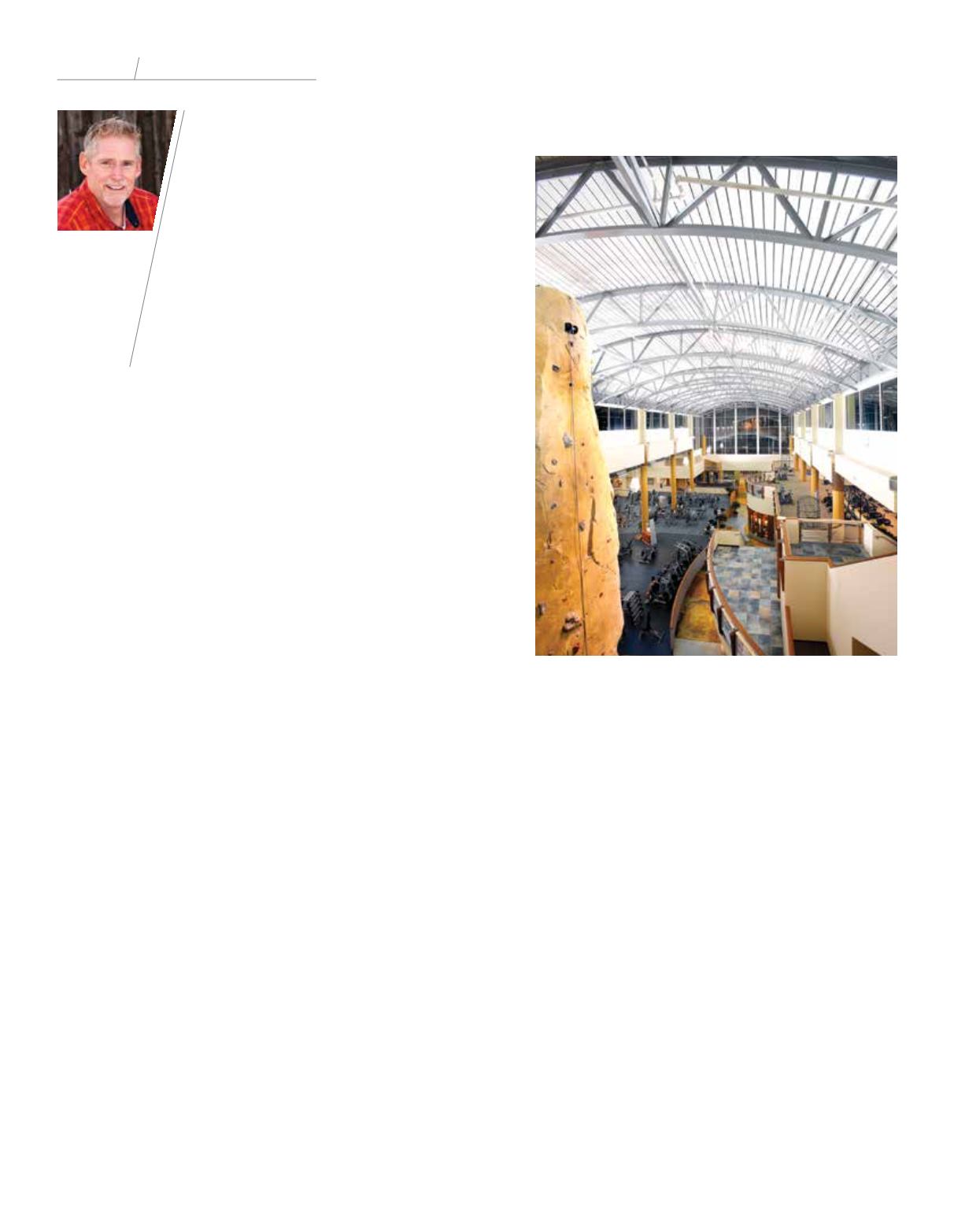

38
/ BUILDING DIALOGUE / JUNE 2017
S
o your beautiful recreation center is open
for business, and it’s a huge success. You
opened on time and on budget. Your
guests love the design and you’ve got great con-
struction quality.
Of course, you deserve a pat on the back. You
did everything right: You got community input;
you hired a reputable architect and contractor; you
allowed ample time for design and construction;
and your budget control was first rate. What could
have gone wrong?
Unfortunately, quite a bit may have already gone
wrong and you don’t even know it.
Recreation center projects – and swimming pools
especially – are complex and delicate construction
types that, if not done correctly, can lead to huge
headaches and unexpected costs down the road.
Take, for example, that great value engineering
savings your contractor found for your mechanical
system. A few years down the road, you may find
that your natatorium ceiling soffits have begun to
rot, and mold is forming due to incorrect air pressure
in your pool area.
Hopefully you are not already noticing a strong
chlorine smell; or rapid rusting and corrosion. When
chlorine interacts with water, chloramines form in
and just above the water surface. Chloramines give
off a strong chlorine odor, are powerful lung irritants
and are the cause of corrosion. Several years ago,
chloramine toxicity caused the temporary closure of
a major Denver metro-area swimming pool.
Pools and pool decks are especially susceptible to
water table issues. Without careful attention to soil
types and compaction specs, pools and decks can
shift and tilt.
So how can these issues be prevented?
During the project planning phase, due diligence
must include a careful vetting of architects and con-
tractors to find a team that is experienced with your
exact project type – especially when constructing a
pool. Colorado is full of reputable and ethical con-
tractors who produce outstanding projects. However,
without specific pool and recreation center experi-
ence, a well-meaning owner/architect/contractor
team can fall prey to these many pitfalls, turning
your amazing project into one big set of “lessons
learned.”
“With the complex systems and delicate tuning
necessary for a successful recreation project, pool
designers need to think like contractors, contractors
need to think like pool designers – and they need
to think together – working toward a common solu-
tion,” said Rick Converse, chief estimator at Pinkard
Construction. Converse and his team have provided
preconstruction and estimating services on more
than 20 pools and rec centers over the past 18 years,
and four in the past two years.
On a recent Denver metro family aquatics park
project, an important program upgrade to add a lap
pool disproportionately increased the budget by al-
most 25 percent. During an in-depth design charrette
to discuss the issue, Pinkard realized that if the team
reassessed bather-load calculations within the con-
text of water-use type, the main-pool size could be
reduced to eliminate the budget overrun without
compromising the program or violating bather-load
specifications.
This teaming solution illustrates the importance
of hiring an experienced and collaborative team. “We
found the aquatics park solution by thinking like a
designer, and our designers are continually keeping
us up to date on how changing water technologies
affect our construction practices,” added Converse.
Learning to think like a designer has allowed us to
develop a pool and recreation construction checklist
of lessons learned and owner operational and main-
tenance priorities, which are incorporated into every
pool and recreation project.
The checklist covers major issues like avoiding va-
por drive, which “drives” undesirable moisture into
your natatorium’s walls; using creative mechanical
system tuning to eliminate chloramines; advising on
pool gutter vs. skimmer systems, locker room drain-
age strategies, pool shell construction techniques
based upon soil types; and implementing simple
construction sequencing approaches to doing ceiling
work over your pool or the timing of your pool finish.
Jim Adams,
LEED AP
Senior
Project
Manager,
Pinkard
Construc-
tion
ELEMENTS
Recreation Centers
Building the Perfect Rec Center: Experience CountsRecreation centers require expertise.
















